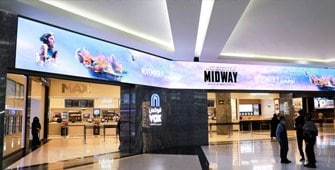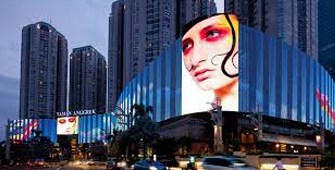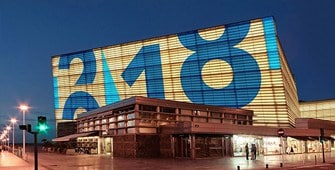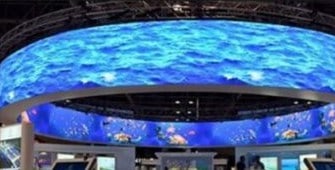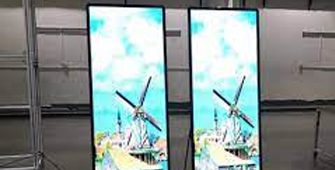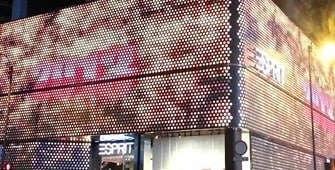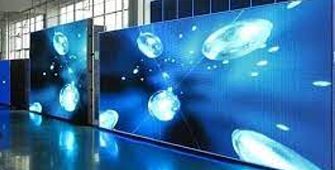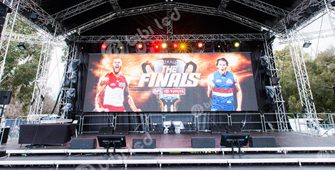DIGITAL MARKETING
LED Screen in Dubai, Indoor & Outdoor Screens
Indoor, Outdoor, Glass Wall Screen, Transparent LED Display, Mesh LED Curtains, Flexible Modules, LED Poster Display
LED screens in Dubai offer businesses a powerful platform to showcase vibrant, high-resolution content that grabs attention. Ideal for advertising, events, and promotions, these screens provide dynamic visual solutions in high-traffic areas. At EDS, we specialize in providing top-quality LED screen installations, tailored to meet your specific needs. Our comprehensive services ensure seamless setup, content management, and maintenance, helping your brand shine across Dubai’s bustling landscape with impactful digital displays.
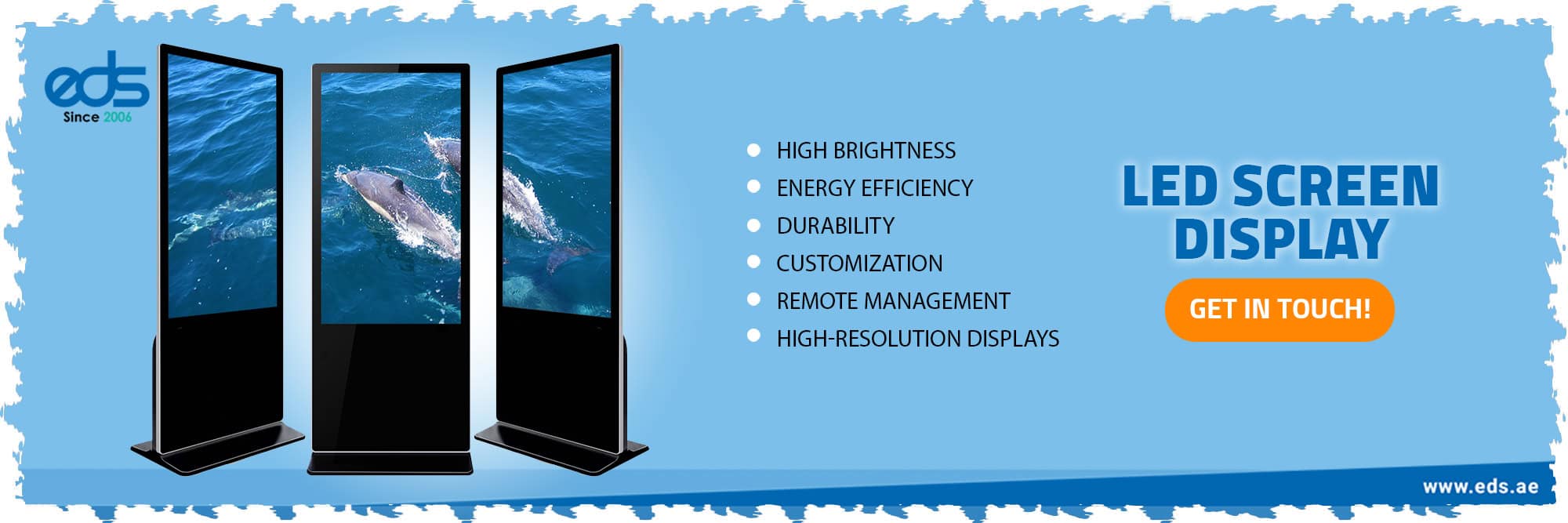
Here are some of the LED display screen options available in Dubai:
Indoor LED Display Screens:
- Indoor LED Video Walls: These large, seamless LED displays are suitable for indoor environments like shopping malls, corporate offices, retail stores, and event venues. They can showcase high-definition visuals, videos, and advertisements effectively.
- Indoor LED Screens: Smaller indoor LED screens are ideal for retail displays, restaurants, hotels, and conference rooms. They can be used to display promotional content, menus, product information, and branding messages.
- Indoor LED Signs: LED signs are suitable for wayfinding, directory boards, and informational displays in indoor settings, making it easier for visitors to navigate large buildings or venues.
Outdoor LED Display Screens:
- Outdoor LED Billboards: These large-scale LED billboards are designed for outdoor advertising along highways, major streets, and commercial areas in Dubai. They provide excellent visibility to a wide audience.
- Outdoor LED Screens: Smaller outdoor LED screens are suitable for outdoor events, parks, stadiums, and public spaces. They can display live broadcasts, event information, advertisements, and branding.
- LED Digital Signage: Outdoor digital signage using LED technology is an effective way to display real-time information, news, weather updates, advertisements, and promotions in public spaces, transportation hubs, and commercial districts.
- LED Display Boards: LED display boards can be used for promotional messages, event announcements, and branding in outdoor locations. They are customizable and can be programmed to display dynamic content.
Benefits of LED Display Screens by EDS:
- High Brightness: LED screens offer excellent visibility even in bright sunlight, ensuring your messages are seen clearly.
- Energy Efficiency: LED technology is energy-efficient, reducing operational costs.
- Durability: LED screens are designed to withstand various weather conditions, making them suitable for the Dubai climate.
- Customization: LED screens can be customized to fit specific dimensions and display content according to your branding needs.
- Remote Management: Many LED screens offer remote content management, allowing you to update messages and visuals easily.
- High-Resolution Displays: LED screens provide sharp, high-resolution images and videos, ensuring your content looks impressive.
An LED screen is a display that uses light-emitting diodes (LEDs) to make images. A television or computer monitor is made up of many LEDs placed close together in a rectangular grid. Each has the ability to produce red, green, and blue light; by varying the brightness and duration of illumination, combinations of these three colors can make all the other colors on the screen. A viewer sees only one image at a time on an LED screen, but each image blends seamlessly into the next one with no perceptible break between them.
The distance between the center of an LED (or group of LEDs that make up a pixel) and the next adjacent LED is called pixel pitch. The smaller this distance, the closer all the LEDs on the screen are together, resulting in better resolution—meaning a more detailed picture.
The term virtual pixel pitch is used in reference to older LED screen technologies that used a shared array of LEDs to create pixels. Virtual pixel pitch refers to half the real or actual pixel pitch, so a virtual 10mm pixel pitch LED screen is actually a 20mm pixel pitch LED screen.
A liquid-crystal display (LCD) is a display device that uses any of various liquid crystal technologies to provide images in color or monochrome. An LED TV is a standard LCD monitor with LEDs positioned behind the LCD instead of a standard light source.
LED screens are a different technology from LCD screens, made for a different purpose. LCD screens are primarily used indoors for close viewing on small-scale projects. LED screens are used outdoors for high impact projects that can withstand bright sunlight.
A few considerations determine which screen and size of screen will be right for your event. These include the distance of your audience from the screen and the size of your audience, whether your event is indoors or outdoors. To make an informed decision, please call us at +971-4-5193444 and we will help you.
The V-Lite LED Screen is modular. It is comprised of many individual panels, which can be connected to create a screen in any shape or size. Each panel measures 576 x 576 mm.
We can provide you with a variety of solutions for showing anything on your screen. Connect a laptop and show presentations, videos, or slideshows. We can take live video feeds from your computers, vision mixers, or any other output source including CV, VGA, HDMI, DVI, SDI and HD-SDI.
Indoor LED display screens are a type of digital signage that delivers bright, full-color, vivid images for various purposes.
Large-scale LED display screens used in indoor settings are formed by connecting several LED screen panels seamlessly.
Indoor LED display screens are becoming an increasingly popular digital and advertising tool. These screens are used in shopping centers, airports, corporate offices, etc. all over the world.
Indoor LED display screens are a technologically advanced and innovative way to communicate with your audience.
This well-known digital display device is a helpful and powerful tool for business owners, marketers and advertisers. It gives your brand, store or message a brand-new look. This captivating technology helps raise brand awareness and increase sales.
The LED display is now renowned for its versatility and endless applications. These LED screen displays can be found in almost every establishment in your country’s big cities.
An indoor LED screen is a versatile digital display that is suitable for a variety of purposes. It can be used to showcase eye-catching audiovisual displays, delivering your message in the most effective way possible.
– Versatile Screen Display .With the right technology, indoor LED screens can be used for a variety of purposes.
– Thin and Light Design. Our advertising screens are made with ultra-thin casting aluminum cabinets. This lightweight material makes our indoor LED display easier to transport and install. The high flatness of our screens adds to the stylish look of your indoor video wall display.
– High Definition. For indoor advertising, the use of LED screens with a smaller pixel pitch value to achieve a higher resolution makes them more suited for close viewing distances. Visual displays with high definition are easily noticed by people passing by.
– True Color and High Brightness. The indoor display screen has a3in 1 (RGB) light-emitting diode that gives you a full-color, vivid display. It is also created based on surface-mounted technology that can produce brighter displays than other digital signages. When placed in a well-lit location like malls, its full color, and high brightness features make it noticeable even.
LED screen is a perfect digital display option for indoor locations. It can be used to give audience and guests at events a beautiful view of visual displays. The following are some applications of LED screen:
The shopping mall is a common site for indoor, fixed LED displays to be installed behind windows or glass facades. A vast majority of retail stores inside a shopping center have fixed LED displays in their windows, which are used to attract more customers.
Airports and other transit stations are often crowded with people waiting for a long time. Indoor LED displays installed in these areas can entertain the travelers, deliver a message, and promote products and services to them. Some of these displays may also serve as wayfinding devices for lost passengers.
Restaurants also use interior LED screens to give customers something to look at while they wait for a table. The screens make the restaurants seem more upscale.
-Museums. Some museums are installing LED display screens to enhance visitor experiences and encourage greater engagement.
The LED video wall used as a theatre background draws the audience’s attention and enhances their viewing experience.
Indoor LED displays can be used in a variety of settings, such as universities, corporate and government offices, banks, bars, social halls and so on.
Indoor LED screens are used for a variety of purposes, including advertising, point-of-sale displays, and information displays. They are often large in size and high resolution.
There are two ways on how you can control your LED screen:
You can control it locally with a USB flash drive or a local computer; the LED display has built-in connection ports that allow you to play and plug in an external device such as a USB flash drive or an external computer (local control).
The second is by utilizing an internet connection; the LED screen is equipped with special software that allows you to manage it remotely. You have to download the necessary app, and you can now use your mobile devices as a remote control (remote control).
The screen has been designed to perform various management functions such as program scheduling and timer; screen brightness adjustment; distance monitoring, on/pause/off setting, etc.
All major file formats can be displayed on an indoor LED display screen. Image formats like JPEG, PNG, and others are compatible with the screen. And video file formats MP4, AVI, WMV, etc., are also suited for playing on the display.
The LED screen’s versatility in displaying a variety of digital content makes it a popular choice for indoor screen display.
It allows users to be creative in creating exhibits and visual presentations that are crucial in marketing, advertising and sales presentations.
OneDisplay has a variety of high-quality indoor LED displays that are perfect for your every need. Our wide pixel pitch indoor LED screens come in P0.93, P1.25, P1.56, P1.875, P1.9, P2.6, P2.97 and P3.9 sizes.
For more information on our indoor LED products, please visit our website page on indoor LED display screens.
If you need further assistance determining which display is right for you, please feel free to message us .
Large-format indoor digital displays are now easier to install, thanks to the advent of LED display panels. The panels, which are made up of LED light-emitting diodes, have magnetic and support structures that accommodate a variety of installation methods. Three such methods include magnetic mounting structures for attaching the panels to a wall and support structures for free-standing installation.
Wall-mounted displays are installed by mounting your display on the wall. Many architects are considering LED video walls when designing their clients’ offices, shops, and other structures.
– Hanging Installation. Using special hanging steel beams, you can hang your indoor LED screen panel from the ceiling. This will allow more people to see it even when it is crowded, and it helps customers find your location faster.
– Stand-Alone Installation. Indoor LED displays are a versatile and cost-effective way to advertise your business. These displays can be mounted on the ground or attached to walls, allowing you to put them in high-traffic areas. Your indoor LED display provider will attach a sturdy stand on the bottom of your screen display to make it stand on its own.
Maintaining your indoor LED screen display properly will help you make the most of your investment in this technology. To ensure that your video wall or digital display will last and function properly, follow these simple maintenance guides:
With constant upheaval and progress in technology, visual technologies—such as LED displays—are becoming more advanced. The best example of fast progression in visual technology is the LED display. It has now become rewarding and quite profitable to own an LED display, whether indoor or outdoor. In the past, it was difficult to share information with audiences; however, this has now changed thanks to LED displays.
LED screens are used for both business and entertainment purposes, though they have different uses. Indoor LED display screens are viewed from a shorter distance than outdoor LED screens.
The indoor fixed LED display is an attractive option for businesses that want to attract new customers and promote their products. The product is customizable, so buyers can purchase a display that works with their budgets.
You can personalize your LED display with custom sizes and content to fit your venue and needs. If you need large-format video walls, we can seamlessly connect multiple units for you.
Before your indoor LED screen provider can give you a price quote, you need to identify some things. The cost of an indoor LED video wall depends on your project requirements, and the requirements will tell you how much your indoor LED wall will cost.
– Video Wall Size. The larger the LED display, the more LED panels that must be used. This means that larger screens cost more money.
– Pixel pitch. Resolution refers to the number of pixels in an image. The more pixels a screen has, the higher quality the image will be.
– Installation Method. The installation method can affect the cost of the LED services that your provider charges, since some installation methods require special equipment and more personnel to accomplish.

